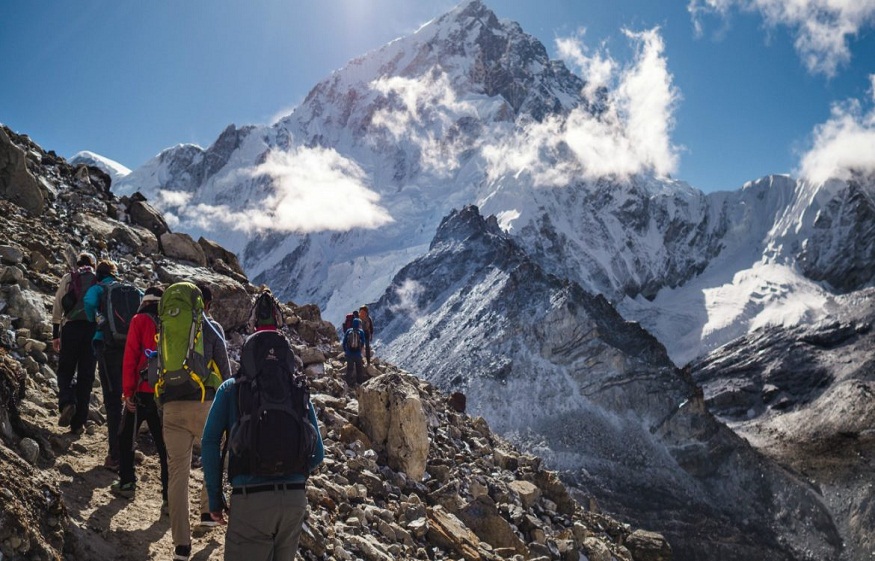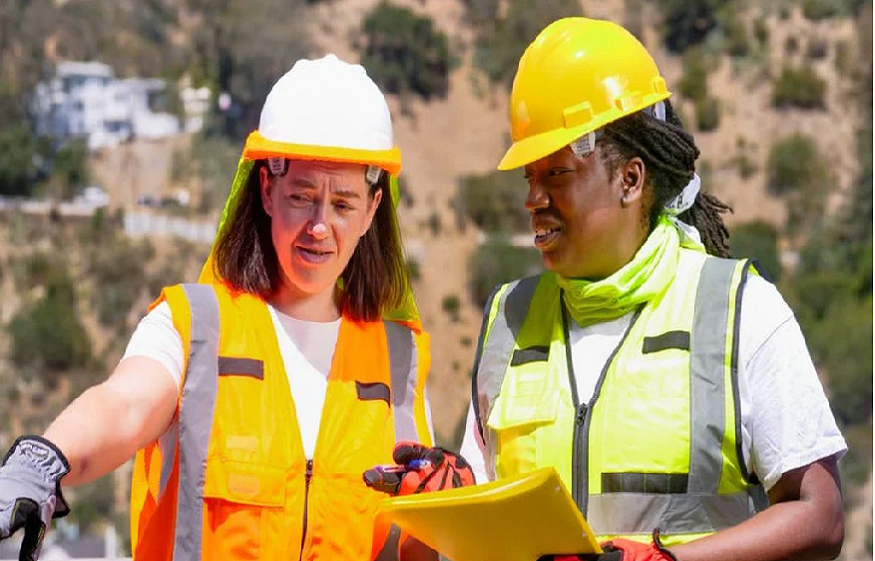The Most Scenic Views on the Everest Base Camp Trek You Can’t Miss
The Everest Base Camp Trek is famous for the physical challenge that it presents, along with the scenic, picturesque views of the Himalayas, including Mount Everest, the tallest mountain in the world. Thomas: The trek is a challenge (you do need to be reasonably fit), but the views along the way are simply incredible. From verdant woods and beautiful Sherpa settlements to lofty summits to peaceful glaciers, the EBC trek showcases some of the most famous and picturesque views on the planet.
The view from Lukla, which kicks off the trek, is one of the first big scenic highlights. The Lukla airport, situated at an altitude of 2,800 meters, has an incredible view of the Khumbu Valley with surrounding peaks gradually coming into view. The first couple of hours of the trek offer beautiful views of rolling hills covered with lush pine forests.
Everest Base Camp Trek Cost Once you reach Namche Bazaar, the centre of the Khumbu region, the vistas begin to awe. Trekkers also gain a sweeping mountain view from the hill above Namche, which shows off the impressive Ama Dablam with its sharp ridge and Mount Everest peeking over the horizon. Namche is also a point for acclimatization, and the high mountains of Lhotse, Nuptse, and Mount Everest are now visible.
The village of Tengboche provides one of the most iconic views of the trek. The Tengboche Monastery, with its stunning views of the jagged peaks of Everest, Lhotse, and Ama Dablam, creates a serene and almost mystical atmosphere. Tengboche is surrounded by alpine meadows, and the sound of prayer flags, which symbolize the place here, adds a spiritual touch to the beautiful landscape.
The Gorak Shep area, a few hundred feet below Everest Base Camp, offers dramatic landscapes as trekkers continue their journey. From Gorak Shep, trekkers can attempt an optional detour to Kala Patthar, one of the most famous viewpoints in the region. A highlight of the trek, at 5,545 meters, the view from Kala Patthar provides almost a 360-degree panorama: Mount Everest in the center, surrounded by Pumori, Lhotse, Nuptse, and other tall peaks.
The views are also breathtaking when trekkers eventually arrive at Everest Base Camp. From the base camp, you can see the Khumbu Icefall, a treacherous, ever-moving glacier that serves as the first obstacle to all those who hope to reach the top of Everest. The view of the towering walls of ice and glaciers stretching out with Everest above is a humbling experience, showing the pure power and beauty of nature.
In addition to the peaks, the trekkers can also enjoy a view from the surrounding valleys, rivers, and high-altitude landscapes. Among the most beautiful with the most stunning, adding to the feeling of remoteness and adventure are the Imja Tse and Khumbu Glacier. The trek passes through varied scenery, ranging from verdant forests and dense rhododendron trees in lower areas to a scarcity of trees, rocks, and fossils at high altitude, meaning that there is a unique set of views at every phase of the trip.
Along with mountain scenery, the trek is also a cultural trip, passing through Sherpa villages where trekkers can view traditional Tibetan-style architecture and meet local people. Buddhist stupas, mani stones, and prayer wheels are among the cultural sights on the trail, enhancing the spiritual and natural beauty of the trek.
So, in short, one of Earth’s most scenic and diverse views is on the Trek to Base Camp Mount Everest Trek. The lush valleys, majestic Himalayan heights, tranquil monasteries, and the intimidating Everest itself all wait to be captured, and each day on the trek is a new visual treat. Whether you’re seeking dramatic mountain vistas, close-up glimpses of Sherpa life, or the untouched beauty of high-altitude havens, the trek presents unforgettable experiences and panoramas you won’t see anywhere else in the world.
Tip: Why is the EBC Trek the Most Scenic Trek?
Everest Base Camp Trek is not only a test of your legs but a gift for your eyes. As you traverse the Khumbu region of Nepal, the terrain changes, and the magnificent scenery unfolds with every footfall. A trek through ever-changing terrain, as well as breathtaking panoramic views of the world’s highest mountains, including Mount Everest, Lhotse, and Ama Dablam, from the lush green valleys and forested slopes to the towering, snow-capped peaks. The sharp contrast of the lush forest at low altitudes and dry, barren land at high altitudes adds to the beauty of this trek. Among the most popular is the Everest Base Camp Trek (EBC Trek) is an uneven, difficult, and interesting route with solitude and raw beauty of the surroundings, stunning views of glacial rivers, typical Sherpa villages, and Buddhist monasteries. With every point along the way offering unique sights to behold, the grandeur and serenity of the Himalayas are breathtaking. One of the main reasons trekkers from around the world show up at Everest Base Camp every year, and why it has become one of the most popular trekking destinations on Earth, is the unprecedented views.
Namche Bazaar: The Gateway to The Himalayas
Namche Bazaar, the “Gateway to the Himalayas,” is one of the best and most important stops in the Everest Base Camp Trek. Located at 3,440 meters, Namche has amazing views of some of the most famous peaks, including Ama Dablam and Lhotse. This lively Sherpa settlement is the regional trading center for Khumbu, a place for trekkers to acclimatize and stock up on supplies. Here, trekkers will receive a true taste of the Himalayas, as expansive vistas of surrounding snow-covered mountains boast views towards the lush valleys. Just above Namche, trekkers will get to see a stunning aspect of tall palisades, and peeking up above the ridgeline, faintly, they can see Mount Everest. This perspective is an excellent introduction to the majesty of the Himalayas, and many trekkers spend time relaxing and acclimatizing here while soaking in the views. The steep streets of Namche Bazaar are lined with not only Buddhist monasteries, market stalls, and friendly residents of the beautiful mountain valley.
Tengboche Monastery and its stunning surroundings
Tengboche Monastery at 3,860 meters is one of the most important spiritual landmarks of the Everest Base Camp trek. Peaceful and all sitting within mountain cliffs, this beautiful monastery offers perhaps one of the most stunning views on the whole route. From Tengboche, trekkers have a stunning view of Mount Everest, Lhotse, Nuptse, and Ama Dablam — the surrounding peaks are majestic. Everest Base Camp Trek. The very monastery, with its traditional Tibetan architecture, colorful prayer flags, and the Buddhist stupas, provides a spiritual ethos to the experience. The views from Tengboche are panoramic, and especially beautiful at sunrise and sunset, when the peaks are bathed in golden and pink light. The placid spout offers trekkers an opportunity to not only rest but also reflect and take in the splendor of the wild. Tengboche is also famous for its Buddhist ceremonies, which allow trekkers to experience monks praying. The magnificent backdrop of snow-capped peaks, along with the spiritual importance of the monastery, firmly places Tengboche as a must-see for any trekker heading towards Everest Base Camp.
Ama Dablam: The Most Spectacular View
Ama Dablam is one of the most striking sights on the Everest Base Camp trek. Often described as the “Matterhorn of the Himalayas,” Ama Dablam is a sharp, pyramid-shaped summit that rises to 6,812 meters (22,349 feet). Its dramatic ridgelines and other distinctive features make it one of the most photographed mountains in the Khumbu region. The view of Ama Dablam is particularly spectacular for hikers as it towers against the backdrop of Mount Everest and other monstrous peaks. There are many great lookout points to see this beauty, but one of the best is around Tengboche, where the peak rises dramatically above the surrounding valleys and forests. As trekkers make their way up into the mountains, over the hours, Ama Dablam is a constant silhouette ahead, its icy peak shimmering in the sun’s rays. You have been available possessing only from October 2023. Ama Dablam is for many people the most impressive and beautiful mountain of the entire trek, making the journey to Everest Base Camp even more intense.
The Panorama from Dingboche
Everest Base Camp Treks At an elevation of 4,410 meters, Dingboche is another essential stop on the base camp trek, with some spectacular panoramic views of the surrounding Mountains. This terminus village also sits on the way to the Everest Base Camp, which makes it a great place for climbers to adjust before heading to higher altitudes. Extend yourself to Dingboche and enjoy a breathtaking panoramic view of the mighty peaks of Ama Dablam with Lhotse, Nuptse, and Makalu. It was all in a valley with terraced fields and herding yaks, framed by tall mountains around the village. The sight from Nangkartshang Hill, just above Dingboche, is especially beautiful; it provides a wide view of the Himalaya range. Advancing from this point, trekkers can view snow-covered ridgelines, frozen glaciers, and rocky valleys, all parts of the sense of being in a remote, pristine part of the world. Dingboche’s setting is perfect for appreciating the beauty of the Himalayas and for thinking about the epic journey ahead as you get ready for the final stretch of your trek to Everest Base Camp.
From Gorak Shep: Nuptse, Lhotse, and Everest
One of the greatest vistas of the entire Everest Base Camp Trek is seen from Gorak Shep. Gorak Shep is the final settlement before Everest Base Camp, and it sits at an altitude of 5,140 meters. The highlight of this spot is that you can see three giant peaks: Nuptse, Lhotse , and Mount Everest. These mountains are fully visible across the horizon, a dramatic sight with knarly ridgelines and snow-covered summits. Seen from this angle, Nuptse, the three closest to the foreground, appears as a massive wall of rock and ice, while Lhotse looms prominently next to it. Naturally, towering over all else is Mount Everest, the highest peak on the planet, and all that make their way below. This view is beautiful, this high up, with glaciers around us. For trekkers who might have struggled like I had to this stage of the journey, the view of these great peaks is a powerful motivator, reminding them of the why of the trek. So close to Everest Base Camp from here that it’s just a day-hike away, but the vistas of Gorak Shep are etched into memory forever, as are the all-consuming themes of the trek as a whole, of natural beauty and raw, wild nature.
Kala Patthar: The Best Viewpoint
In terms of a bird’s-eye view of Mount Everest, the site with the greatest perspective is Kala Patthar. Kala Patthar is a small hilltop located just above Gorak Shep at a height of 5545 meters. Although it makes for a fairly short ascent, it is widely considered the best vantage point for trekkers en route to Everest Base Camp. Its view from Kala Patthar is spectacular as Mount Everest stands right in front with the other massive peaks like Lhotse, Nuptse, and Pumori framing its beautiful landscape. The sunrise from Kala Patthar is a moment you will never forget as the first bursts of light drench the peaks of the mountains in golden colors while casting long shadows across the valley. Even the view of the Khumbu Icefall here is breathtaking, with glaciers visible beneath, while the roads seem adventurous as it is rugged here. For many trekkers, standing at this elevation and having a view of the highest mountain on earth is the trip’s highlight, making this a bucket list hike for everyone traveling in the Everest region. The beauty along the way and the sense of success when you arrive at Kala Patthar make the journey well worth it.
The Khumbu Glacier and Icefall
Mount Everest Base Camp Trek As trekkers near Everest Base Camp, they are met by the Khumbu Glacier, one of the largest glaciers in the region. Earthquakes, and then there is the glacier itself sprawling across a massive expanse of ice. It goes on for miles and is hemmed in by jagged peaks, making for a strange but beautiful ambience. The Khumbu Icefall, where the glacier connects to the base of Mount Everest, is arguably the icefall’s most noticeable feature. This massive icefall, filled with endless chasms of ice and crevasses, is always shifting and moving, making it one of the most perilous places for climbers as they attempt to reach the summit of Everest. For trekkers, the chance to get so close to the Khumbu Icefall is a stark reminder of the mountain’s overwhelming bulk and the hazards climbers encounter in their quest to reach the summit. The view from Everest Base Camp of the icefall is spectacular — stunning ice formations that have been created over thousands of years. The glacier is a moving mass and could be considered a metaphor describing the extreme environment of mountaineers and trekkers throughout the day.
The Village of Pheriche and Some Near Peaks
The village of Pheriche perches at 4,370 meters and is a common stop No. 1 for trekkers on the way to Everest Base Camp. The village is nestled deep in the Khumbu Valley, and trekkers are rewarded with incredible views of the surrounding peaks. The most iconic of these is Ama Dablam, frequently considered one of the most beautiful mountains on the planet. Its pyramid-shaped summit rises dramatically from the skyline. Trekkers can also see Lhotse, Nuptse, and even Makalu from Pheriche on clear days. The village itself is a nice rest area, a nice break from the tiring trek. It’s a great spot to rest and acclimatize before making your way higher up to altitude. As Pheriche has a medical clinic, trekkers can also get consultations for altitude sickness or other health-related queries. The undulating land and mountains in the distance are a beautiful landscape around the village and make this a charming stage of the trek to Everest Base Camp. And whether that’s sweeping vistas of majestic mountains or the peaceful splendor of a remote Sherpa community, Pheriche adds another perspective on the Himalayas.
The Descent: Unexpected Vantage on the Way Down
Although the way up Everest Base Camp is filled with vistas that become embedded in memory, the way down brings its own set of unexpected or easily ignored views. After completing the trek to Everest Base Camp and Kala Patthar, trekkers start their way back, often feeling accomplished but also having a newfound appreciation for the view they experienced going up. The perspective on the way down is different; the mountains seem to shift and change and reveal angles and perspectives that were obscured on the way up. The views from new angles of towering skyscrapers, including Mount Everest, Ama Dablam, and Lhotse, as well as the lower altitude, allow for more accessible breathing and fresh air to fill your lungs as you take in the gorgeous surroundings. The Khumbu Glacier and the craggy terrain that once felt remote and inaccessible on the ascent now feel familiar. The colorful, lively villages of Namche Bazaar and Phakding, with their buzz of activity on the way up, now evoke a sense of nostalgia. The return along the trail through the lush forests and the tiny villages through which you passed on the way is not only a physical descent back down into the valleys, but also a journey through feelings, as trekkers process the final elements of the sights, sounds, smells and sounds of one of the world’s great trekking routes. The walk back is all too often treated as a formality, an hour or two out of the way to scale the real prize; the final view of Everest ensures the return trip is equally unmissable.
What can you see from Everest Base Camp?
Trekker looks to the Khumbu Icefall and the surrounding peaks from Everest Base Camp. Although the view of Mount Everest from base camp itself is partially blocked by other ridgelines, it is a truly monumental sight. Other peaks you can also see are Nuptse, Lhotse, and Pumori. The Khumbu Glacier also runs through the base camp area to form a spectacular ice field. The scale and ruggedness of the land surrounding base camp help trekkers feel like they’re in a truly remote and extreme place. The Icefall–with its constantly moving ice blocks and crevasses–brings adventure, while the surrounding peaks add to the spectacle of the place. While you can see Everest from Kala Patthar, the nearby viewpoint that has the best unobstructed view, Everest Base Camp is still a spectacular place to take in the scale and majesty of the area.
Where do you get the best view of Everest?
The closest view of Mount Everest is available at Kala Patthar, which is a hilltop located above Gorak Shep at an elevation of 5,545 meters. Its view of Mount Everest and surrounding peaks, including Lhotse, Nuptse, Pumori, and Ama Dablam, is clear, unobstructed, and panoramic. Kala Patthar is often considered elbowing its way up the bucket list for the ultimate Everest viewpoint, where trekkers are indulged with an amazing 360-degree panorama of the entire Khumbu. Sunrise gives the best view of the peaks painted in golden and pink hues, and many trekkers wake up early to catch this magical moment that remains memorable long after the trek. While Everest Base Camp provides views of the glacier and the surrounding peaks, Kala Patthar is in a category of its own, providing the most spectacular and iconic view of Mount Everest itself.
Which is the best base camp trek?
Himalayan Base Camp Trek is one of the most well-known and iconic trekking destinations in the world, but the Annapurna Base Camp trek is not far behind in its respect. If both treks provide views of the Himalayas, both treks have something unique to offer. Apart from the incredible views of Everest, Lhotse, Nuptse, and the Khumbu Icefall, you get to experience the local area by trekking through Sherpa villages. The trek itself is hard, especially considering the altitude, and is the ultimate for those looking to get up close and personal with the world’s tallest mountain.
Another, the Annapurna Base Camp Trek, is a little less strenuous but opens up the mesmerizing views of Annapurna, Machapuchare , and more breathtaking peaks. With lush landscapes, waterfalls, and sub-tropical forests, the Annapurna trek has a more varied terrain. It’s generally more accessible and also has the possibility of getting the most beautiful views on the Annapurna Circuit and Annapurna Sanctuary.
In the end, the right base camp trek for you is up to you. Everest Base Camp is ideal for the adventurous who want to see the highest mountain in the world and traverse the stunning terrain of the Khumbu area, and Annapurna Base Camp provides a diverse and a little easier option with amazing views as well as cultural sights.
Where is the best view of Mount Everest in Nepal?
The most magnificent view of Mount Everest, Nepal, from Kala Patthar at an altitude of 5545m, just above Gorak Shep. It is the most common place for trekkers to get a beautiful, unobstructed view of Mount Everest. From Kala Patthar, the mountain looms huge in the foreground, while Lhotse, Nuptse, and Pumori complete the panoramic vista. The view from Kala Patthar is so unbelievably beautiful at sunrise, when the sun rises and washes over the snow-capped peaks, bathing the Himalayas in a golden hue.
And other parts of Nepal provide spectacular views of Mount Everest, too. The view of Everest from Tengboche Monastery is breathtaking (shown), framed as it is by the peaks of Everest Base Camps Ama Dablam, Lhotse, and Everest itself. Namche Bazaar, further down the valley, gives trekkers their first view of Everest and other nearby peaks. But, for the most iconic and panoramic view of Everest, Kala Patthar is the very best place in Nepal for trekkers hoping to get the best overall view of the world’s highest peak.










